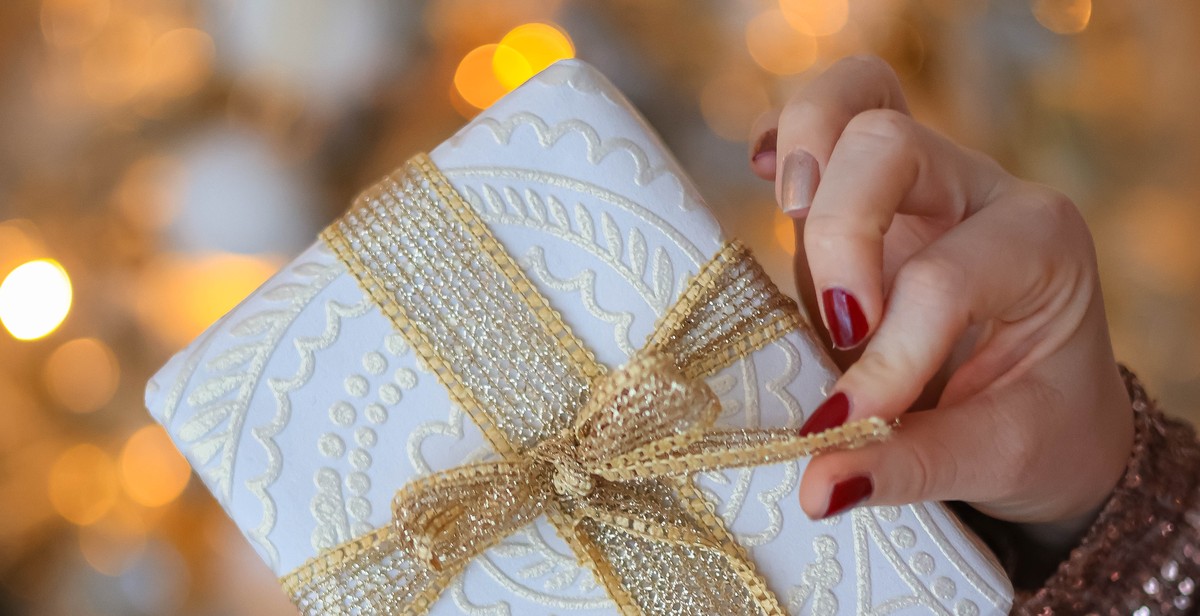The Art of Wire Wrapping: Techniques for Creating Intricate Gemstone Jewelry
Wire wrapping is a jewelry-making technique that involves twisting and bending wire to create intricate designs that hold gemstones, beads, and other decorative elements. It is a versatile and creative craft that has been around for centuries and is still popular today.
What is Wire Wrapping?
Wire wrapping involves using wire to create intricate designs that hold gemstones, beads, and other decorative elements. The wire is twisted and bent into shape to create a secure setting for the gemstone or bead. Wire wrapping can be done with a variety of wires, including copper, sterling silver, gold-filled, and more.
History of Wire Wrapping
Wire wrapping has been around for centuries and has been used to create jewelry and other decorative items. It is believed to have originated in ancient Egypt, where wire was used to create jewelry that was worn by both men and women. Wire wrapping was also popular in ancient Rome and Greece, where it was used to create intricate designs that were often worn by royalty and other members of the upper class.
Today, wire wrapping is still popular and is used to create a wide variety of jewelry designs. It is a versatile and creative craft that allows jewelry makers to create unique and intricate pieces that are sure to impress.

Tools and Materials for Wire Wrapping
Wire wrapping is a beautiful and intricate jewelry-making technique that requires a few essential tools and materials to get started. Here are some of the most important items you’ll need:
Essential Tools for Wire Wrapping
1. Round-nose pliers: These pliers are used to create loops and curves in the wire.
2. Chain-nose pliers: These pliers are used for gripping the wire and bending it into shape.
3. Wire cutters: These are used for cutting the wire to the desired length.
4. Nylon jaw pliers: These pliers are used to straighten the wire and prevent it from getting scratched or damaged.
5. Mandrel: This is a tool used to create consistent loops and shapes in the wire.
Types of Wire for Wire Wrapping
There are several types of wire that can be used for wire wrapping, each with its own unique properties:
- Gold-filled wire: This wire is made by bonding a layer of gold to a base metal, creating a durable and affordable option.
- Sterling silver wire: This wire is made from 92.5% pure silver and 7.5% copper, creating a strong and lustrous material.
- Copper wire: This wire is an affordable option that is easy to work with and comes in a range of colors and finishes.
Choosing Gemstones for Wire Wrapping
Gemstones are a beautiful addition to wire-wrapped jewelry, and there are many options to choose from. Here are a few tips for selecting the right gemstones:
- Choose stones that are durable and won’t easily chip or break.
- Consider the color and size of the stone in relation to the wire you’ll be using.
- Look for stones that have interesting shapes or patterns to showcase in your design.
| Wire Type | Pros | Cons |
|---|---|---|
| Gold-filled wire | Durable, affordable, and available in a range of colors and finishes. | Not as valuable as solid gold wire. |
| Sterling silver wire | Strong, lustrous, and easy to work with. | Can tarnish over time. |
| Copper wire | Affordable, easy to work with, and comes in a range of colors and finishes. | Can oxidize and change color over time. |

Basic Wire Wrapping Techniques
Wire wrapping is a popular jewelry-making technique that involves bending and shaping wires to create intricate designs and settings for gemstones. With a few basic wire wrapping techniques, you can create beautiful and unique pieces of jewelry that showcase your favorite gemstones.
Single Gemstone Wire Wrapping Technique
The single gemstone wire wrapping technique is a simple and versatile method for creating pendants, earrings, and other jewelry pieces. To get started, you will need a piece of wire that is long enough to wrap around your gemstone and create a bail for hanging.
- Measure your wire and cut it to the desired length.
- Place your gemstone in the center of the wire and fold the wire in half around the stone.
- Twist the wire together just above the stone to secure it in place.
- Take one wire and bend it up and over the stone, creating a loop at the top.
- Wrap the wire around the base of the loop a few times to secure it in place.
- Repeat on the other side of the stone to create a matching loop.
- Trim any excess wire and use pliers to tuck in the ends.
Double Gemstone Wire Wrapping Technique
The double gemstone wire wrapping technique is a more advanced method that allows you to create complex designs and settings using multiple gemstones. To get started, you will need two pieces of wire that are long enough to wrap around your gemstones and create bails for hanging.
- Measure your wires and cut them to the desired length.
- Place your gemstones side by side in the center of the wires and fold the wires in half around the stones.
- Twist the wires together just above the stones to secure them in place.
- Take one wire and bend it up and over the first stone, creating a loop at the top.
- Wrap the wire around the base of the loop a few times to secure it in place.
- Repeat on the other side of the first stone to create a matching loop.
- Take the second wire and repeat the process on the second stone.
- Connect the two loops at the top with a jump ring or wire link.
- Trim any excess wire and use pliers to tuck in the ends.
Wire Wrapped Link Chain Technique
The wire wrapped link chain technique is a fun and creative way to make your own chain for necklaces, bracelets, and other jewelry pieces. To get started, you will need a piece of wire that is long enough to create multiple links.
- Measure your wire and cut it to the desired length.
- Using round-nose pliers, create a loop at one end of the wire.
- Thread a gemstone bead onto the wire and create another loop at the other end of the wire.
- Using chain-nose pliers, grip the loop at one end of the wire and twist it to the side.
- Thread another gemstone bead onto the wire and repeat the process to create a loop at the other end of the wire.
- Continue adding beads and creating loops until your chain is the desired length.
- Attach a clasp to the ends of the chain using jump rings.
Advanced Wire Wrapping Techniques
Wire wrapping is a versatile technique that can be used to create intricate and beautiful jewelry designs. With the right tools and techniques, you can create stunning wire-wrapped pendants, rings, bracelets, and more. Here are some advanced wire wrapping techniques that you can use to take your wire wrapping skills to the next level.
Wire Wrapped Bail Technique
A wire-wrapped bail is a great way to attach a pendant to a chain or cord. It is also a great way to add a decorative element to your jewelry design. To create a wire-wrapped bail, you will need a piece of wire that is slightly thicker than the wire you are using for your pendant. The wire should be long enough to wrap around the top of the pendant and create a loop for the chain or cord.
1. Cut a piece of wire that is about 6 inches long.
2. Create a small loop at one end of the wire using round-nose pliers.
3. Place the loop over the top of the pendant.
4. Wrap the wire around the pendant, making sure to keep the wire tight and close to the pendant.
5. Continue wrapping the wire until you reach the other side of the pendant.
6. Create another small loop at the end of the wire and trim off any excess wire.
Wire Wrapped Bezel Technique
A wire-wrapped bezel is a great way to set a gemstone or other object in your jewelry design. To create a wire-wrapped bezel, you will need a piece of wire that is slightly thicker than the wire you are using for your pendant. The wire should be long enough to wrap around the stone and create a bezel that will hold the stone securely in place.
1. Cut a piece of wire that is about 12 inches long.
2. Place the stone in the center of the wire.
3. Wrap the wire tightly around the stone, making sure to keep the wire close to the stone.
4. Continue wrapping the wire until you have created a bezel that is high enough to hold the stone securely in place.
5. Use pliers to shape the wire and make sure it is tight and secure.
Wire Wrapped Pendant Technique
A wire-wrapped pendant is a great way to create a unique and personalized piece of jewelry. To create a wire-wrapped pendant, you will need a piece of wire that is long enough to create the pendant shape you want. You can use a variety of techniques to create different shapes and designs.
1. Cut a piece of wire that is about 18 inches long.
2. Shape the wire into the desired pendant shape using pliers.
3. Wrap the wire around itself to create a secure and tight pendant shape.
4. Use additional wire to create decorative elements or to attach a stone or other object to the pendant.
5. Use pliers to shape the wire and make sure it is tight and secure.
| Technique | Difficulty Level | Uses |
|---|---|---|
| Single Gemstone Wire Wrapping | Easy | Pendants, earrings, and other jewelry pieces |
| Double Gemstone Wire Wrapping | Advanced | Complex designs and settings using multiple gemstones |
| Wire Wrapped Link Chain | Intermediate | Chains for necklaces, bracelets, and other jewelry pieces |
| Technique | Description |
|---|---|
| Wire Wrapped Bail Technique | Used to attach a pendant to a chain or cord |
| Wire Wrapped Bezel Technique | Used to set a gemstone or other object in a pendant |
| Wire Wrapped Pendant Technique | Used to create a unique and personalized pendant |

Troubleshooting and Tips
Common Wire Wrapping Problems and Solutions
While wire wrapping can be a fun and rewarding hobby, it can also be frustrating when things don’t go as planned. Here are some common problems that wire wrappers may encounter and tips for how to solve them:
| Problem | Solution |
|---|---|
| Wire keeps slipping out of place | Make sure your wire is the appropriate gauge for your project and that you are using pliers to secure your wire tightly. You can also try using a stronger grip or using a different type of pliers. |
| Wire is too difficult to manipulate | Try annealing your wire by heating it with a torch or placing it in an oven to soften it. You can also try using a different type of wire or a different gauge. |
| Wire breaks or snaps | Make sure you are not using too much force when manipulating your wire. You can also try using a different type of wire or a different gauge. |
| Wire is uneven or crooked | Make sure you are using a straight edge or ruler to measure your wire and that you are using pliers to bend your wire at a consistent angle. |
Tips for Creating Professional-Quality Wire Wrapped Jewelry
- Invest in high-quality tools, such as pliers, wire cutters, and a mandrel.
- Choose the appropriate gauge wire for your project.
- Practice your wire wrapping techniques on scrap wire before starting your project.
- Choose high-quality gemstones or beads to showcase in your wire wrapping.
- Take your time and be patient with your wire wrapping.
- Experiment with different wire wrapping techniques and styles to find your own unique style.

